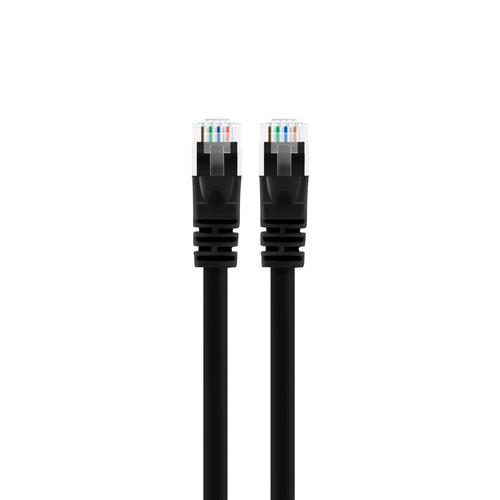An Ethernet cable delivers the broadband signals between your computer, modem, router, and other wired-internet-capable devices, such as smart TVs. Cat5 or Cat5e Ethernet cables have been the technological standard due to their ability to transmit 1,000 Mbps of data on average; however, the Cat6 Ethernet cable is becoming favored by more internet users today.
What Is a Cat6 Ethernet Cable?
Category 6 is an Ethernet cable standard assigned by the Electronic Industries Association and the Telecommunications Industry Association. The Cat6 cable is the upgraded version of the Cat5 cable. Rather than thinner 24-gauge wires, Cat6 cables are constructed with four pairs of thicker 23-gauge copper wires. These next-generation cables also have foil and braided shielding.
Why Are Mbps and Mhz Important to Consider When Choosing Ethernet Cables?
Mbps, or megabits per second, is a unit measure of data and represents the speed and reliability of download ability. The higher the Mbps, the faster your Ethernet cables are capable of downloading a program or video. Mhz, or megahertz, measures the power of your computer and how efficiently it runs. If you require handling multiple tasks simultaneously, using Ethernet cables between 3,000 to 5,000 Mhz is recommended.
What Are the Benefits of a Cat6 Ethernet Cable?
Cat6 cables offer several advantages over Cat5 and Cat5e cables.
Compatibility With Older Existing Networks
Because Cat6 uses the same RJ-45 standard connecter as previous Ethernet cables, Cat6 cables are reverse compatible with Cat3, Cat5, and Cat5e cabling. If you run a business that already has cabling connections with older cables, an upgrade to Cat6 cables is seamless.
Faster Data Transfer Speeds and Bandwidth
The construction of Cat6 cables helps to support higher data transfer speeds of up to 1,000 Mbps or one gigabit per second over a limited distance of about 180 feet. In theory, a Cat6 cable may even transfer 10 gigabits per second over a maximum distance of 164 feet.
More Resistant to Interference
The thicker wire coiling of the Cat6 cable reduces signal interference or crosstalk, creating a clearer signal. The sturdier construction also makes these cables more reliable than the Cat5 generation.
How To Select The Best Cat6 Ethernet Cable for You
As Cat6 cables are becoming the industry standard, here are a few shopping considerations.
Cable Length
Note that the longer the cable, the increased potential for slower data transfer speeds. Cat6 cables work reliably within 180 feet. If you are planning to connect your modem directly to your PC, arrange them as closely as possible and select shorter cables. There are Cat6 Ethernet patch cables available in lengths as short as one foot.
User Location
If you are planning to connect an outdoor smart TV to your router or you have IP-based security cameras, select Cat6 cables that are specifically built for outdoor use. There are Cat6 outdoor cables that are weather-proof and can be buried underground.























































